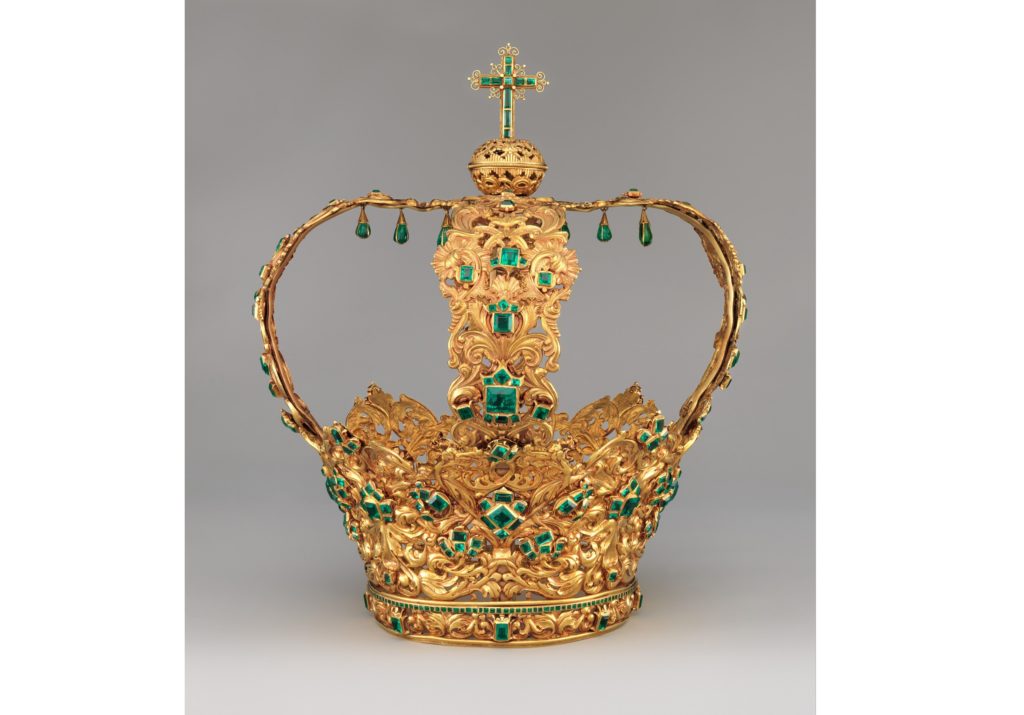JEWELS, COAL, & GLUE AT THE MET MUSEUM
Jewelry: The Body Transformed at The Metropolitan Museum has many royal gems even if it didn’t snag Marie Antoinette’s pearl and diamond pendant at Sotheby’s. Instead, the exhibition brings together innovative adornments from a range of centuries and cultures. An 1890s Tiffany Orchid brooch 4 ½” long combines an orchid’s delicacy with the glow of gold and diamonds. A bronze Celtic Northern Italy brooch from 600 B.C. is austere and elegant. It may be a model for a 1994 William Harper brooch Homage to Cy Twombly and Joseph Cornell. Both circular forms on a curving loop are less than 7 inches long; Harper’s more complex mixed media work incorporates miniature gold-framed art works, gold spirals, gold cloisonné enamel on gold and silver, tourmaline, coral, agate, Mexican opal, and pearl.
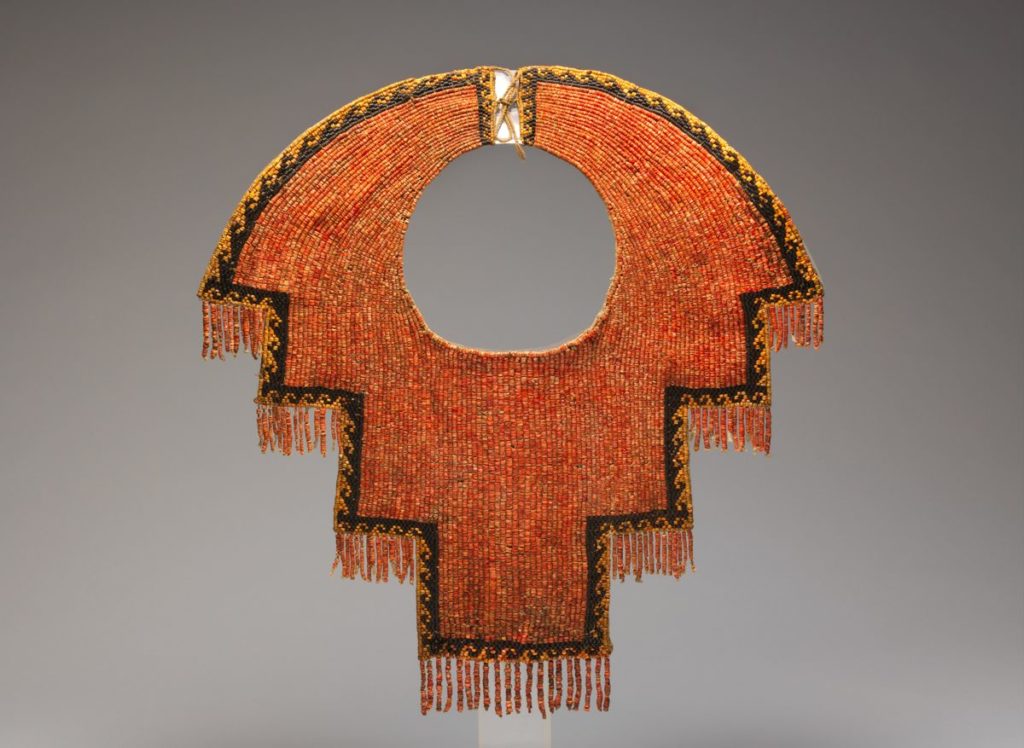
12th–14th Century;
Spondylus Shell & Black Stone Beads, Cotton
The mix of glam and unconventional jewels spans two millennia and begins in a high-ceilinged exhibition entrance where twenty plexiglass plinths display a range of gems. A 12-14th Century Chimú Peruvian collar made of coral-hued Spondylus shell beads with white flecks captures light as the wave pattern around the collar’s zigzag edges frames the head and neck opening. Most continents and some micro-cultures are represented, including textiles and gold from Submarines Island in eastern Indonesia. Both women’s and men’s ceremonial and occasional collars, necklaces, pendants, and chains seem popular in Asian, European, and African, and North and South American cultures.
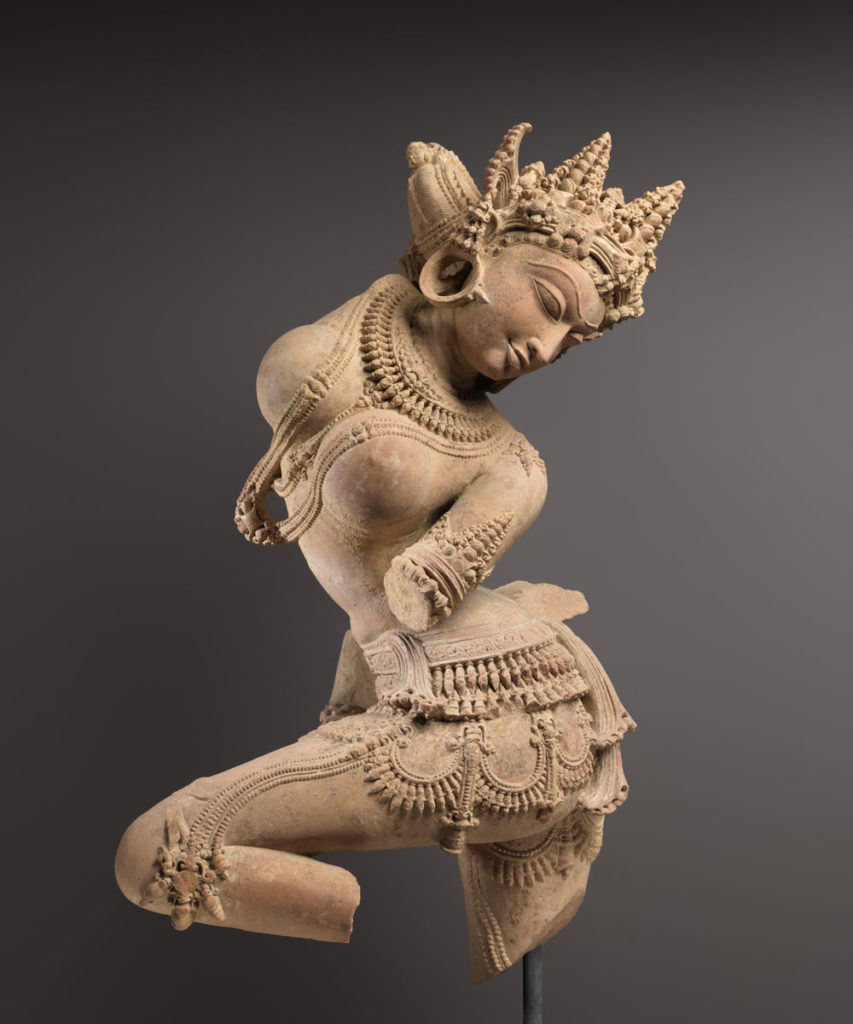
The uses of materials including feathers, horn, gold, and pearls seems to extend into daily use items in the 20th Century. A 1992 breastplate titled Sticks and Stones and Words by Kiff Slemmons alludes to Native American shell breast shields, but its main material, used pencils, suggests that the Natives received the short end of the stick. A 1987 shaped silver and copper wire Incubus necklace by Simon Costin features five glass vials with human sperm. The most alluring necklace using symbolic rather than precious materials is Attai Chen’s 2011 dark starburst ruff “lace” collar of layered paper, paint, coal, glue, and linen. It has a phoenix-like symbolism for its beauty belies its materials. A 19th Century Côte d’Ivoire gold bead design with intricate spiral and other patterns has correspondences with a 20th Century Songhay (Mali) necklace, ring, and bracelet whose circular and spiral patterns are created from straw.
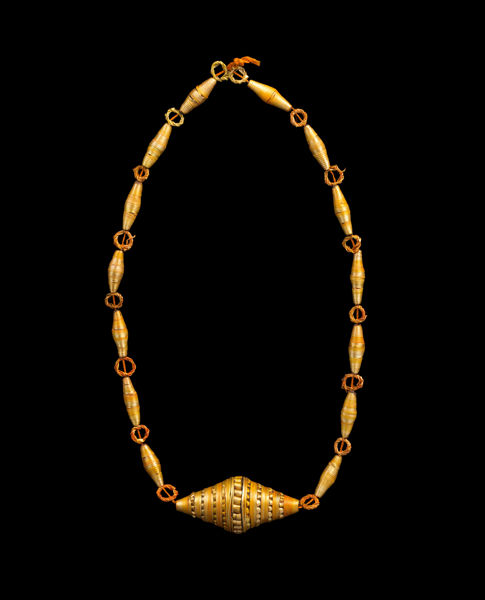
One traditional dazzler is the gold Crown Of The Virgin Of The Immaculate Conception, known as the Crown of the Andes from Columbia, South America. This headdress studded with emeralds was created in 1660 and enlarged in 1770. One wonders if it was ever worn or how it was used in ritual ceremonies. Every body part, it seems, welcomes adornments. Among the many bracelets for wrists and arms, two with conical spiral shapes share a space — Peter Chang’s brightly-colored plastic bracelet made in 1995 and a bronze Thai bracelet dated 300 B.C.- A.D. 200. Funerary jewelry includes Egyptian gold toe and finger stalls from c. 1450 B.C. that would, presumably, accompany the mummy to its afterlife. Spiral motifs seem evident in many cultures dating from the Bronze Age c. 1200-1800 B.C. A range of spiral leg and arm bands, a brooch, and a diadem all may have inspired Alexander Calder’s spiral jewelry.
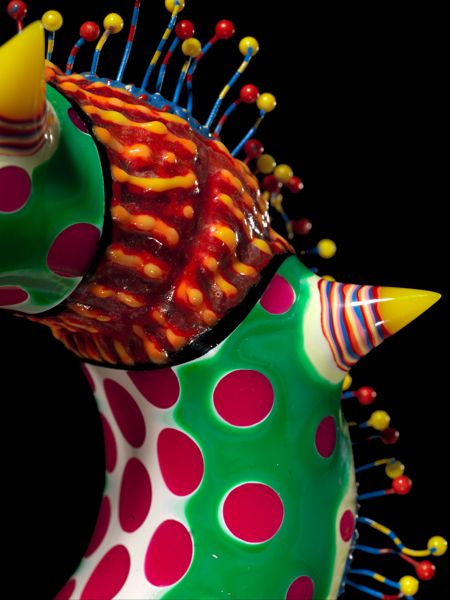
Bracelet, 1995
Polyester and epoxy resin; Diam. 7 1/2 in. (19.1 cm); irreg.
The Metropolitan Museum of Art, New York, Gift of Donna Schneier, 2007
Men wore collars from metal and other materials, engraved neck armor, and heavy bronze and gold necklaces in Europe from 1516 or earlier. Men are well represented in this exhibition, including in paintings and sculpture that show their jewelry such as head of an oba (king) wearing coral jewelry from the Kingdom of Benin (Nigeria), ca. 1550.
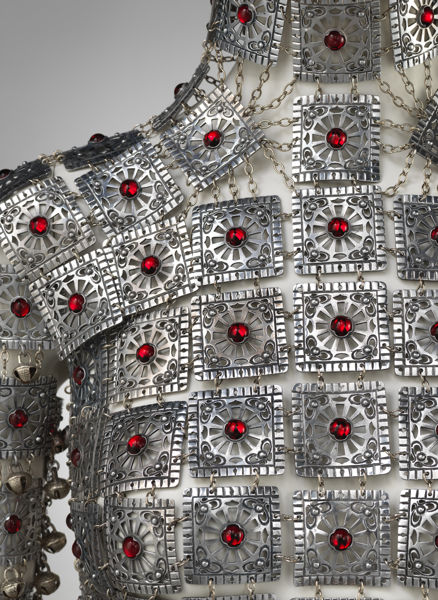
In the “Jewelry on the Edge” section, “Yashmak,” Shaun Leane’s 2009 design for Alexander McQueen, remade in 2017, is a full upper torso covering of metal plates inset with gems; even the head is covered, leaving openings only for the eyes and mouth. As we know, McQueen’s fashions are not known for their wearability; instead, they often address cultural themes we all face including vulnerability and power. Women are rarely pictured in adornments that protect them, and it’s interesting that The Met chose to feature this side of McQueen.
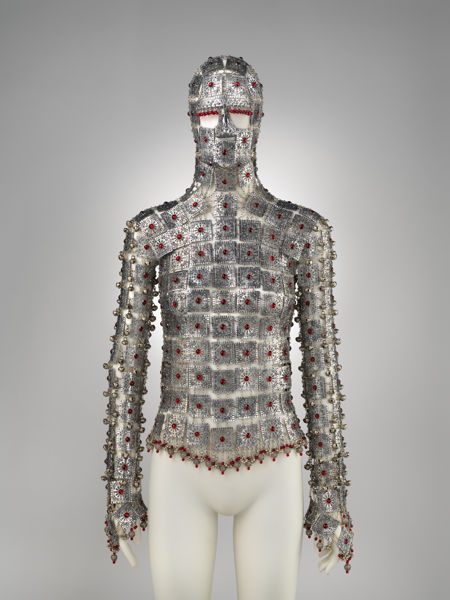
In all, most body parts — from ears, nose, and mouth to fingers and toes — are covered in this exhibition. Look up The Met Museum’s January jewelry programs and tours. Its great 280-page exhibition catalog adds luster and depth to the exhibition.
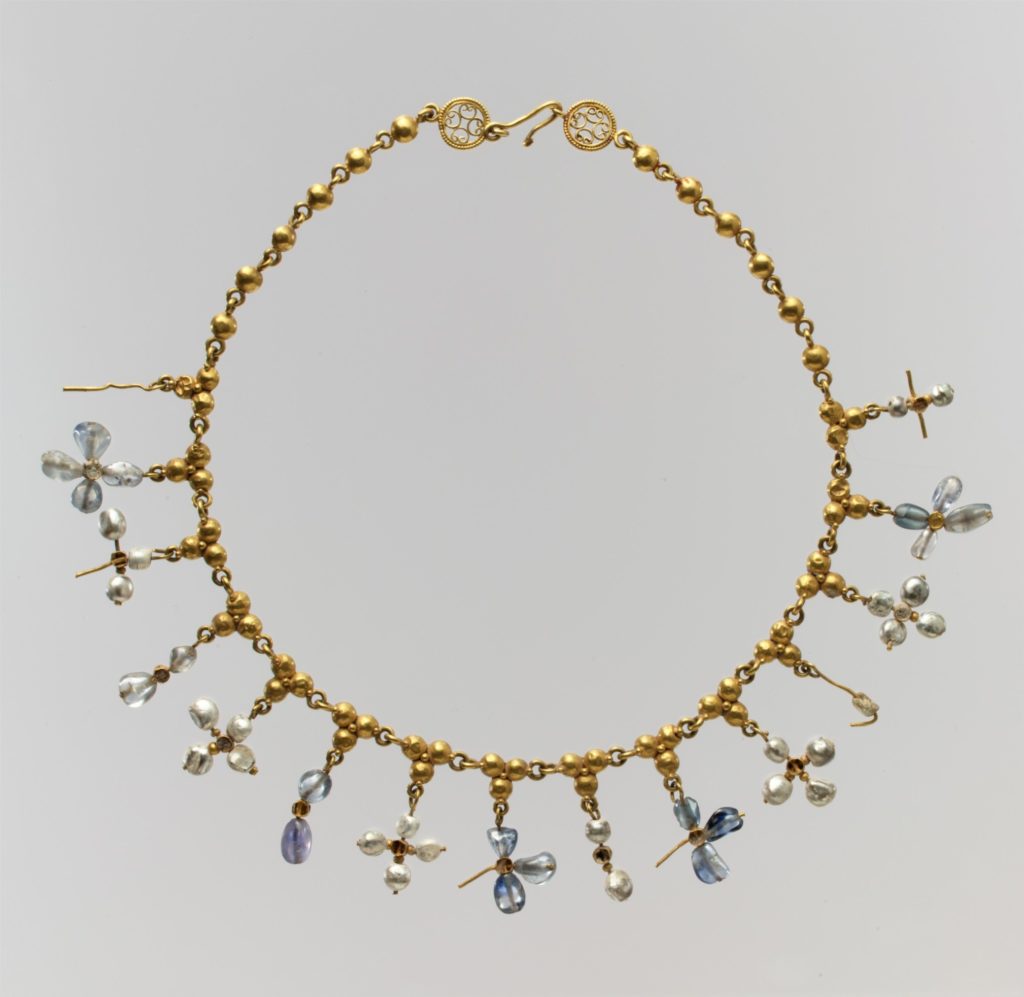
BYZANTINE, 6TH-7TH CENTURY, Gold, Pearl, Sapphire, Smokey Quartz, Quartz ( Probably made in Constantinople )
TO EXPLORE THE EXHIBTION VISIT: THE MET
Written By: Jan Castro
Featured Image: Crown Of The Virgin Of The Immaculate Conception, known as the Crown of the Andes from Columbia, South America; Ca. 1660 (diadem) and ca. 1770 (arches); Colombian; Popayan; Gold, repoussé and chased; emeralds
Photo Credits: The Metropolitan Museum Of Art
SUBSCRIBE TO OUR MAILING LIST FOR MORE LUXURY TODAY!
YOU WOULD ALSO ENJOY



